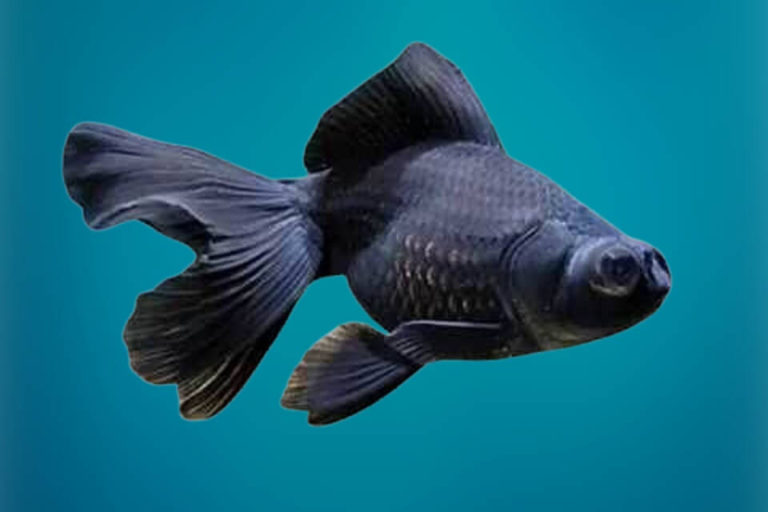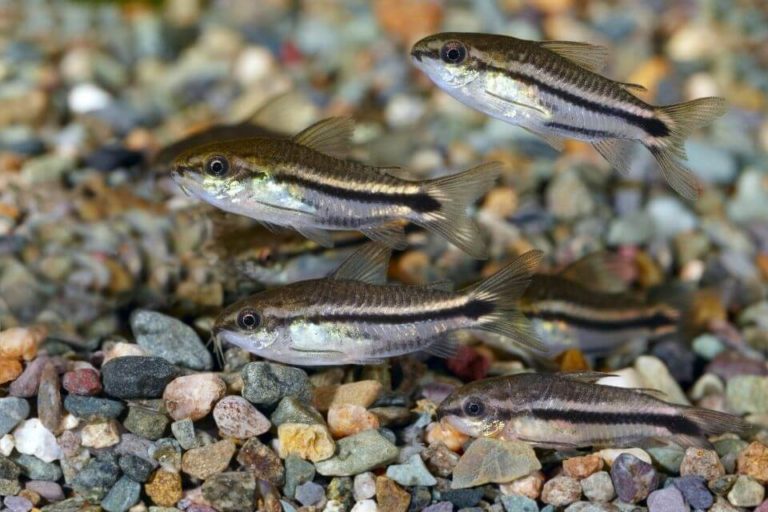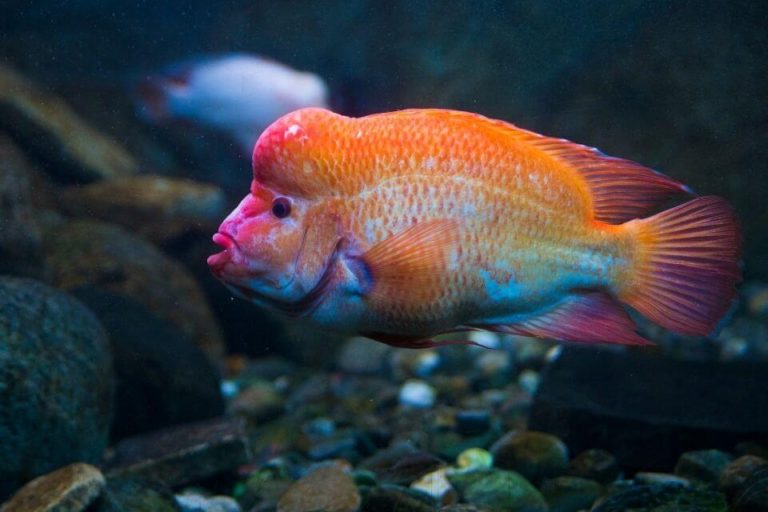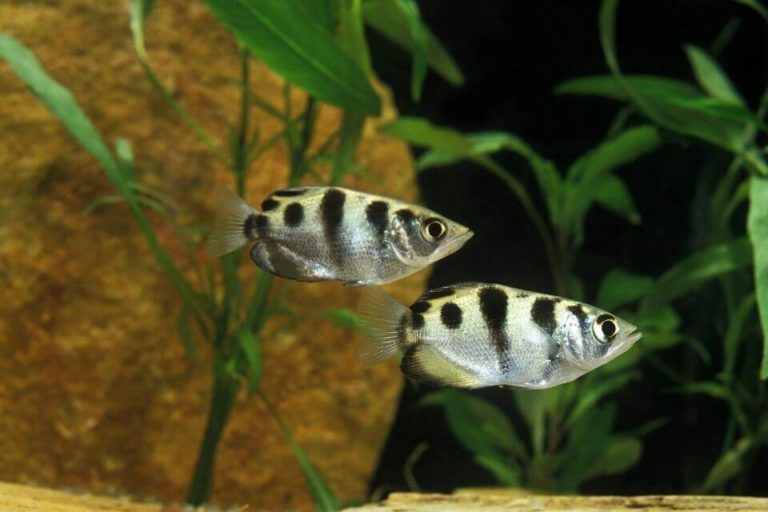Texas Cichlid Care Guide 101: Size, Lifespan, Tank Mates, Tank Size, Diet
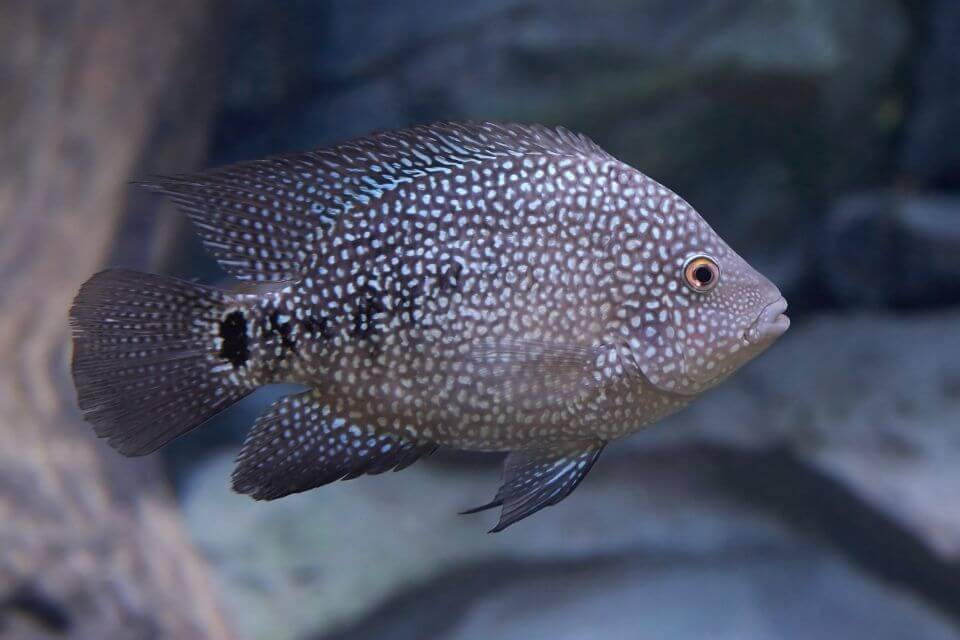
Texas Cichlid is one of the most favored fish among aquarists and fish enthusiasts alike. It is a large, beautiful, and vibrant freshwater fish with a lot of personalities.
If you are an aquarium owner who is looking to spice things up and add some individuality to your tank, you should consider the Texas Cichlid. Caring for these dazzling freshwater fish takes a lot of time and knowledge.
Keep reading this Texas Cichlid Care guide to learn how to properly care for these fish species and maintain their tank to give them a long and healthy life. You’ll find information about breeding, diet, tank mates, and more.
| Quick Facts: | |
|---|---|
| Common Names : | Texas Cichlid, Rio Grande Cichlid, Rio Grande Perch |
| Origin : | Rio Grande drainage in Texas and Northestern Mexico |
| Family : | Cichlidae |
| Scientific Name : | Herichthys cyanoguttatus |
| Care Level : | Modarate |
| Temperament : | Aggressive |
| Social : | Territorial |
| Diet : | Omnivores |
| Size (average) : | Upto 12 inches |
| Lifespan : | 10 - 13 years |
| Breeding : | Egg layer |
| Minimum Tank Size: | 55 gallons |
| Tank Environment : | Freshwater Gravel or Sand substrate Driftwood, rocks Hardy plants or Silk plants |
| Temperature : | 68 – 74 °F (20 – 24 °C) |
| Water Hardness : | 8 - 15 dGH |
| Water pH Level : | 6.5 - 8.0 |
Species Overview
Texas Cichlids are known for their unique color patterns and designs that are displayed uniquely across their bodies. The aggressive behavior and their personalities are just as feisty as their looks!
Also known as the Rio Grande Perch or Rio Grande Cichlid, the Texas Cichlid is found in a variety of color assortments and sizes. They are wonderful to look at, as their colors cast interesting patterns in the light when they swim around.
Learn how to properly take care of them and you’ve earned a lifelong companion!
Texas Cichlid Behavior & Temperament
If you own other Cichlid species or you are familiar with the genus as a whole, then it should come as no surprise to you that Texas Cichlids can be quite aggressive.
While this does not make them particularly difficult to take care of, it does make it tricky to find the best tank mates and decorations. These fish are highly territorial, meaning they will be happiest when left alone rather than in groups of their own kind.
Aquarists who own Rio Grande Cichlids see these fish remaining pretty active throughout the whole day. They love to dart back and forth in the tank, wrestle with plants (and even uproot them), or dig around in the tank floor for snacks.
They are incredibly intelligent, even recognizing their owners after some time. Once you and your fish get used to each other, you will even see it swim up to you in greeting when you get close to the tank!
Texas Cichlid Lifespan
Most members of the Cichlidae family are hardy and durable. Texas Cichlid lifespan will be longer if they are in a tank with well-maintained conditions. A healthy Texas Cichlid can live up to 13 years old in a captivity environment.
Make sure you have the capacity to dedicate over a decade of your time to caring for a colorful fish like this.
Texas Cichlid Size
The average fully grown Texas Cichlid size is about 12 inches in a captivity environment. But, there will always be some differences between the size of a wild variety and the captivity breeds. They may only be a few inches long when you buy them.
However, they will soon grow into adults over the coming months. While juveniles take a while to grow, you can expect fully grown Texas Cichlid size to reach up to their maximum size within a couple of years.
Appearance, Colors, and Special Markings
There are different types of Texas Cichlids that each come with their own color patterns and textures, and each type of fish will be discussed in its own section below. First, it’s important to recognize some of the features that all Rio Grande Cichlids share.
They closely resemble other Cichlids, with rayed dorsal fins, bubble eyes, and thick lips. What makes Rio Grande Cichlids stand out from all the others is the way in which they display their dazzling colors that reflect brightly in the water.
Most Rio Grande Cichlids have a base color of gray or dark gray, while others may sport shades of green. The colors and patterns displayed on top depending on the type of Texas Cichlid the fish is:
Red Texas Cichlid

Perhaps the most different from other others, Red Texas Cichlid has very unique color patterns. They deviate from standard Cichlid design in that they have a base color of bright red with glowing white dots all over the body.
Sometimes, these fish carry black dots around them as well.
Green Texas Cichlid

Green Texas Cichlids are desired for the brightness of their colors. They can easily stand out from the others because of how dazzling their neon green and yellow scales are.
Actually, a little-known secret is that Green Texas Cichlids aren’t full Texas Cichlids at all, but rather Lowland Cichlids from another part of the world entirely.
Electric Blue Texas Cichlid

Also called the Electric Blue Texas Cichlid, these vibrantly blue Cichlids have a lot in common with standard Texas Cichlids but often appear in brighter shades of blue.
They can sport white or turquoise speckles along with their bodies, making them look like they are almost glowing in the water.
Texas Cichlid Care
The most important part about taking care of Rio Grande Cichlids is making sure they are living in the perfect aquarium conditions. Since they are from the southern regions of the United States, they are used to warm and shallow waters and a very specific diet.
Before you invest in this large and colorful freshwater fish, make sure you know how to properly set up and maintain your tank.
– Texas Cichlid Tank Size
These Cichlids grow fast, so don’t be fooled by their small size as juveniles. They might only be a few inches long when you get them, but they will grow to be almost a foot in length by the time they are adults.
As active and aggressive swimmers, your Rio Grande Cichlids will need a lot of space to move around. If you are going to have a single Texas Cichlid, you must have a tank size of at least 55 gallons.
If you want to add one or two more to your collection, your tank should be at least 125 gallons minimum. The bigger your tank size, the happier your fish will be.
– Water Parameters
Remember these fish species are subtropical fish, meaning they will thrive in warmer temperatures. Not only is this something important to keep in mind when looking for appropriate tank mates.
It is also a condition you will need to check consistently to make sure the tank is still providing the best possible environment for your Rio Grande Cichlids.
- Tank Temperature: 68°F to 74°F (20 – 24 °C)
- Water Acidity: 6.5 and 7.5 pH
- The hardness of the Water: Between 8 to 15 dGH
– Tank Setup, Substrate, & Decorations
Beginner aquarists may find the Rio Grande Cichlid to be a little more difficult to care for than most, but that is mostly because people aren’t used to the active and aggressive behaviors displayed by this large fish.
In a large, safe, and well-maintained environment, your Texas Cichlids will feel happy and content. Help them flourish by creating the perfect home for them!
Cichlids love natural-looking environments. But they are also known to eat and uproot any plants that you might place in the tank. They will also actively dig around in the substrate while searching for food and plant particles to eat.
The best decorations you can have in your tank are those that are heavy enough to stay put even when your Cichlid decides to play rough.
Floating Aquarium Plants, such as Hornwort and Java Moss, are great options for the Cichlids in your tank. Logs and rocks can help them find shelter when they need a space to stake out as their own.
Small pebbles and sand make for good substrate materials so the digging won’t do much damage. But, make sure not to over-decorate! Texas Cichlids need a lot of open space to swim around, too. Overcrowding them may just lead to more aggression.
– Suitable Plants
Since Texas Cichlids will eat just about anything, it is important not to add fake or poisonous plants to your tank. But the more indestructible the plant, the better. The following may be some good suggestions for your Rio Grande Cichlid:
- Green Cabomba
- Java Fern
- Anubias
- Anacharis
- Java Moss
- Hornwort
You can also try adding plant flakes and particles to supplement your Texas Cichlid diet from time to time, as plant and vegetable matter can help enrich your fish with nutrients.
Common Possible Diseases
They are hardy fish, but they are not immune to disease and illness. A well-maintained tank can help them avoid certain ailments and diseases, but there are still some types of sickness to be on the lookout for.
- Fin Rot: A bacterial infection, fin rot is an infection that causes the fins to deteriorate and rot away. You will usually find it starting on the dorsal fin of the affected fish. This is a result of bacteria spreading in the water. Replace and clean the water in your tank and this condition should go away on its own.
- Ich: Much like fin rot, Ich happens when bacteria and disease form on the skin of the fish. This causes itchy patches to form all over the fish’s body, and it will itch itself against rocks and wood to try and relieve the symptoms. You can add medicinal drops to the water to help your fish heal.
Texas Cichlid Feeding & Diet
Since they are always active, Texas Cichlids require quite a substantial diet to stay healthy and satisfied. Most aquarists feed their Rio Grande Cichlids two small meals per day, as any more could cause them to start fighting over it.
As omnivores, these Cichlids will eat just about anything. Try to feed them a well-rounded freshwater fish diet and mix up live and frozen foods with pellets to enrich their eating experience.
Some good food options include:
- Brine shrimp
- Frozen shrimp
- Bloodworms
- Algae
- Blanched vegetables
- Insects
- Fish pellets
Provide your Texas Cichlids with enough food so that they can eat it all within just a few minutes. If it takes them longer than 2 to 3 minutes to finish their meal, you are feeding them too much.
Texas Cichlid Tank Mates
There is nothing wrong with keeping a Texas Cichlid all by itself. If your tank is a little too small to accommodate multiple fish, you can certainly keep your Cichlid on its own.
If you want to find some Texas Cichlid tank mates, you have to understand its personality. There are some fish that can habitat well with aggressive fish like these Cichlids, while others might just turn into the Cichlid’s prey.
Here are a few Texas Cichlid tank mates to suggest:
- Silver Dollars
- Giant Gourami
- Green Terror Cichlid
- German Blue Ram
- Oscar Fish
- Tinfoil Barbs
- Convict Cichlid
- Sailfin Pleco
- Black Ghost Knife Fish
These Cichlid species will likely attack and eat fish that are significantly smaller than them, so it is a good idea to just look for fish that share the same size and temperament as the Rio Grande Cichlid.
Texas Cichlid Breeding
Unlike most freshwater fish, it is easy to breed Texas Cichlids in captivity. In the wild, they spawn openly, meaning they can easily breed from wherever they are.
However, it is crucial to keep in mind that these fish become a lot more aggressive during the breeding season. You must create a separate breeding environment for your Rio Grande Cichlids using another tank, one that is preferably around 75 gallons in size.
A soft substrate and a couple of decorations will do just fine. Two Cichlids will naturally mate once they are paired off together. When it is time for the fish to breed, they will engage in a mating ritual together.
They will chase each other around, kiss with their lips, or slap their tails together. Soon after, they will lay their eggs! Sometimes, these fish will dig a hole or find a soft spot in the substrate to lay their eggs.
Then, the female will lay up to 1000 eggs on the ground. Rio Grande Cichlids will protect and guard their eggs until they are ready to hatch. The fry takes a while to grow, but after about 5 days of hatching, they will be free swimming.
If you plan on keeping any of the babies, you can slowly start reintroducing them to the right tank.
Origin and Distribution
These fish species are the only species of Cichlids that are native to the United States. As their name would imply, they are naturally distributed around rivers and lakes in Mexico and Texas.
Currently, they can also be found as far east as Louisiana and Florida, where they are fished for food and sport. Since they are so desired all over the world, Rio Grande Cichlids can be found in many different freshwater fish supply stores.
Check with your local retailer to see if there are any adult Cichlids in stock near you.
FAQs
How to Tell Texas Cichlid Male or Female?
The differences between male and female Texas Cichlids can be difficult to determine if you have an untrained eye. Females are typically less brightly colored and are a little bit smaller than male Texas Cichlids.
Some males can be distinguished even further by a small bump or cranial horn on the top of their heads. It is important to sex the two fish before they can be bred.
If you are thinking about breeding Texas Cichlids, make sure to follow the strict guidelines so you can ensure a successful breeding session.
Are Texas Cichlids Aggressive?
Texas Cichlids are one of the more aggressive freshwater fish species in the aquarium trade. While it is not incredibly difficult to take care of them, it is important to keep in mind that they are very territorial and will attack smaller fish.
This aggressive behavior can make it hard to find proper tank mates for these fish, but there are still plenty of species available for them to coexist with.
If you are having too much trouble finding any neighbors for your Texas Cichlid to get along with, it is also completely acceptable for you to keep this fish by itself. If you are looking to give it a companion, you can invest in other Cichlids as well as Barbs and Oscars.
Are Texas Cichlids Hardy Fish?
Compared to the majority of other freshwater fish species for your aquarium, Texas Cichlids are pretty hardy. They can take care of themselves well enough, and they have strong immune systems to keep them feeling good in a number of different environmental conditions.
Because of this, there are no special diseases or medical maladies that are specific to Texas Cichlids. This does not mean the fish are invincible. In fact, Rio Grande Cichlids are still susceptible to a lot of common ailments and diseases that other fish are faced with.
Bacteria in the water or poor tank conditions can lead to illnesses such as Fin Rot and Ich, which can usually be treated with over-the-counter medication.
Are Texas Cichlids Good for Beginners?
Depending on how much experience you have caring for freshwater fish and how long you have owned an aquarium, you may or may not find Texas Cichlids to be a challenging fish to take care of.
They are not too difficult to maintain and understand, but they do require a decent knowledge of their behaviors, personalities, needs, and preferences in order to give them a long and healthy life.
If you are truly looking to experience everything there is to know about Texas Cichlids, you may want to start with just one solo fish. They are a bit aggressive, but not picky or stubborn.
You will find them beautiful and playful after you learn to get their tank set up and dietary habits just right.
How Big Do Texas Cichlids Get?
Rio Grande Cichlids start out very small when you are born. When you buy them at your local fish store, you are likely buying a juvenile Texas Cichlid. They will only be a few inches long at this point but do not be fooled.
An adult Texas Cichlids grow to be up to 13 inches in size. You may need to increase the size of your tank to provide ample space for this large and rapidly-growing freshwater fish.
How Fast Do Texas Cichlids Grow?
Like most Cichlids, Texas Cichlid grows incredibly fast. Although they are only a few inches long within the first few months of life, over the next several months they will practically double in size.
It takes less than two years for a Rio Grande Cichlid to reach its fully-grown length.
Do Texas Cichlids Have Teeth?
Texas Cichlids do have teeth, which lends to their appearance as aggressive and predatorial fish. They have a set of pharyngeal teeth in the back of the mouth and the throat, as well as a set of regular teeth just behind the lips.
These teeth help them break down their food into fine pieces that can be processed by their small bodies.
Find Texas Cichlid for Sale?
You can find Texas Cichlid for sale at any of your local freshwater fish supply stores. From major retailers to individual fish breeders, there are plenty of purchasing options when it comes to finding the perfect type of Texas Cichlid.
If you can’t find any local options, you can always find your favorite color of Texas Cichlid for sale online.
Final Thoughts
Texas Cichlids are certainly some of the most dazzling and desirable freshwater fish in the aquarium world.
Whether you are looking to start your very first aquarium or you are an experienced tank owner looking to expand your collection of fish, you will find the Rio Grande Cichlid to be a unique choice.
While it may seem intimidating at first, the Texas Cichlid is full of energy, life, color, and personality. It’s all about finding the perfect tank and setting it up under the right conditions so your fish can thrive.
Cater to your Texas Cichlid’s natural environment, and with a little bit of trial and error, you will have the perfect aquarium setting for your Rio Grande Cichlid for years to come.


